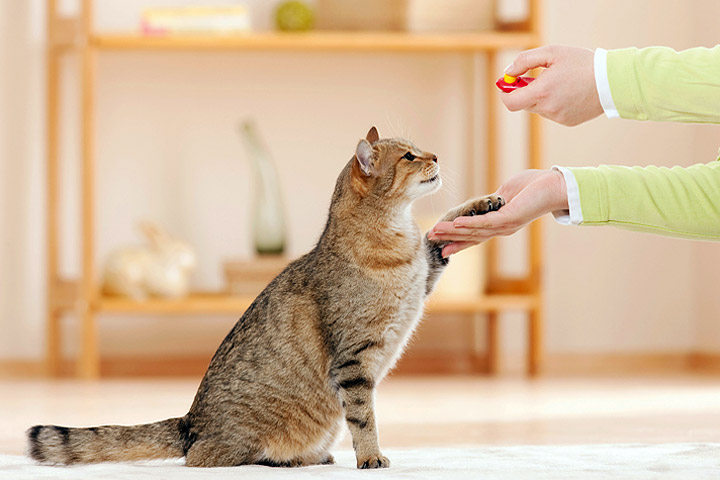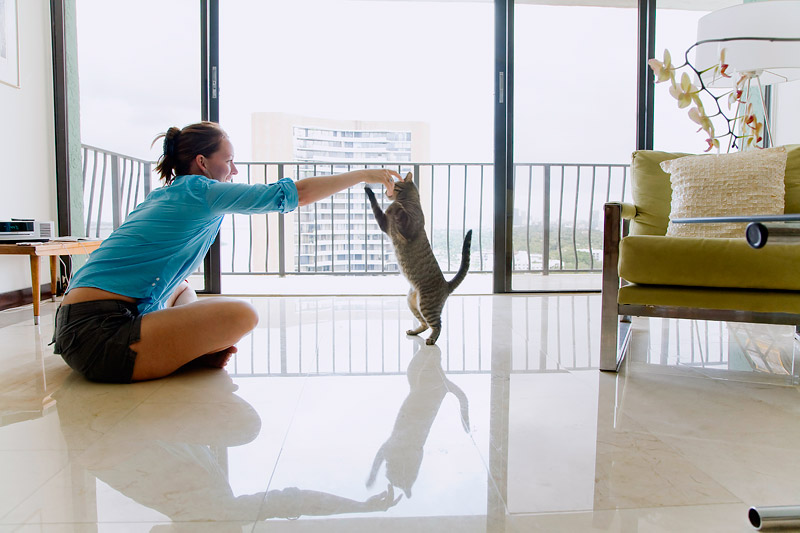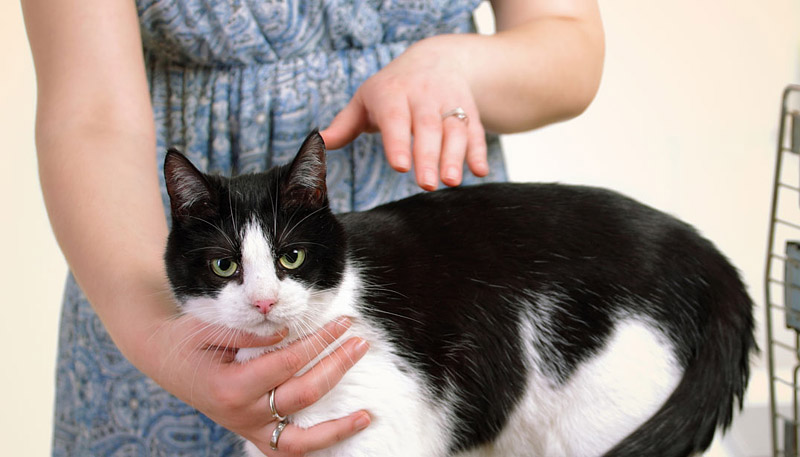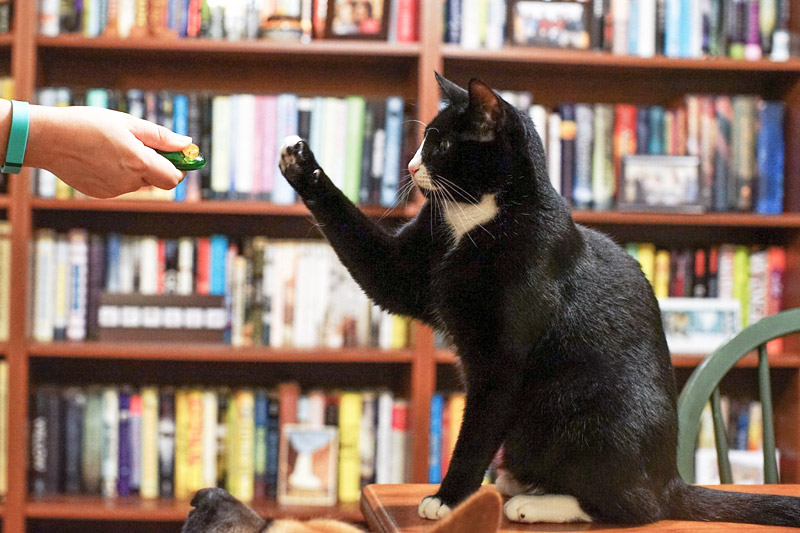
Many people assume cats are not trainable, but this isn’t necessarily the case. This assumption may be so prevalent because owners attempt to train their cats to stop doing instinctive behaviors like clawing, pouncing or climbing.
These behaviors are ingrained in your cat; it’s what makes your cat a cat, and trying to eliminate them is futile (not to mention highly stressful for your kitty).
That being said, you can teach your cat to perform these behaviors in a way that’s more desirable to you (and less destructive or disruptive to your household). One of the keys to doing so is to avoid the following training mistakes.
Top Mistakes to Avoid When Training Your Cat

Cats are intelligent and can learn to do what you’re telling them, provided you tackle the training in the right way.
This includes avoiding the following training mistakes, which are common among cat owners, according to Mikkel Becker, a trainer who specializes in reward-based training and behavior modification for dogs and cats. So, in order to successfully train your cat, here are the top mistakes to avoid.
1. Overestimating How Much Time It Takes
You should train your cat in very brief, one- to five-minute increments spread throughout the day. Whenever you have an extra minute or two, try squeezing in a quick training session with your kitty; cats learn best this way.
2. Ignoring Good Behaviors and Reacting to Bad Behaviors
It’s easy to ignore your cat’s good behaviors (such as scratching in the right place, on her scratching post) and react by scolding when she’s doing something you don’t want her to (like scratching on your couch).
But by giving a reaction to her negative behavior, she’ll equate it with getting attention and therefore may keep doing it. Instead, shower your kitty with praise or a healthy treat when she does the right thing and ignore or redirect her when she does something wrong.
3. Trying to Stop Instinctive Behaviors
If you adopt a cat, you should get used to the idea that she’s going to scratch, pounce, jump and climb. Rather than trying to stop these instinctive behaviors, provide ways your cat can be a cat that are acceptable in your home.
For instance, if your cat tries to climb your curtains, offer a tall cat tree or elevated perch. You can encourage your cat to use the new cat tree instead of the curtains by offering healthy treats or praise when she uses it.
4. Assuming Your Cat Will Know What You’re Saying Without Teaching Her
If you want your cat to stay off the counter, you can’t simply say “off” and expect that she’ll know what to do. Positive reinforcement is essential here and will get you much further than punishment.
To teach your cat what “off” means, redirect your cat from the counter to a more suitable location, such as her cat tree, and reward her with a treat. In time, she’ll learn that when you say off, she should go to her cat tree and will be rewarded for doing so.
5. Setting Unrealistic Training Goals
If you push your cat too hard or too fast, she may get frustrated and give up. Every cat is different in their pace of learning, so move gradually and only progress to the next step when your cat is comfortable and confident enough to do so.
Giving many opportunities for your cat to succeed and be rewarded is also important to building her confidence. As Becker said, “ … keep in mind that all those little steps add up to big steps — and potentially big changes in your cat’s behavior.”
Why You Shouldn’t Punish Your Cat

Punishing your cat by scolding, yelling or hitting is never recommended. It will stress your cat out and cause her to become afraid of you, while doing nothing to correct the behavior. In many cases, it may even make the behavior worse.
Even yelling in the household that’s not directed at your cat may cause her to run and hide. So it’s a good idea to keep yelling to a minimum for your cat’s sake. If your cat has a problem behavior, you’re far better off getting to the bottom of it than attempting to punish the behavior.
If your cat suddenly stops using the litter box, a medical issue may be to blame, for instance, or, if your cat becomes overly aggressive when you play, she may be lacking enough stimulation and healthy outlets for her energy.
The reality is that punishing your cat for a normal behavior, or a behavior that’s signaling an unmet need or medical issue, is not only cruel but also unfair.
Cats Are Highly Intelligent

Cat and dog owners often debate over who’s smarter, dogs or cats. The answer is they’re both intelligent in their own ways, and both species can learn many things if their owners take the time to teach them.
For instance, researchers have shown that cats, like dogs, can be trained to distinguish between different quantities of objects and follow pointing gestures. It’s also been argued that the number of neurons in the brain is a greater indicator of intelligence than brain size, and this is an area where cats excel.
Cats have 300 million neurons in their cerebral cortex — the brain area associated with processing, problem solving, and perception — while dogs have 160 million. In addition, cats know instinctively how to use a litter box; there’s no housetraining required.
And while a dog’s memory is thought to be only about five minutes long, kitties can remember up to 16 hours and even seem to remember human kindness and will return the favor later. If an owner fulfills her feline’s wish to interact, the cat will often comply with the owner’s desire for contact at other times.
Five Cat Breeds Who Excel at Training
Cats can learn to behave appropriately at home as well as be trained to do tricks (including jumping through hoops, running through agility courses and performing “sit” and “come” commands). Many cats can also be taught to walk on a leash and even use your toilet! Every cat is different in its propensity for performing such feats, of course, and there tend to be certain breeds that are more trainable than others.
If you’re interested in adding a cat to your home that excels at training and is renowned for its intelligence, consider adopting one of the breeds that follow (check local purebred and other cat rescues in your area).
1. Abyssinian
Abyssinians are active, acrobatic cats that love to be on the move. Because of their high energy levels and intelligence, you’ll need to occupy your Abyssinian with food puzzles, daily exercise, and even training for tricks and agility. Many Abyssinians like to be walked on a leash and are highly social animals.
2. American Shorthair/Domestic Shorthair
American shorthairs are pedigreed while domestic shorthairs are not. Either way, many such cats are highly intelligent and quick and observant learners. These cats often learn to respond to commands like “sit,” “down,” and “come,” and many enjoy learning tricks and walking on a leash. They also do well in learning house rules, such as locating the appropriate places to scratch.
3. Bengal
Bengals love to play and be on the move. They’re also very demanding of your attention and may do whatever it takes to get it. Bengals are curious and intelligent, often learning how to turn on water faucets, open drawers and cabinets and get into other mischief to keep herself entertained. Walking on a leash, learning tricks and playing fetch are good ways to stimulate your Bengal kitty.
4. Savannah
The Savannah cat is a cross between a domestic cat and a serval, which is a medium-sized wild African cat with large ears. Savannahs will climb as high as they can go, and their long bodies and legs allow them to reach places you might think are unreachable.
Savannahs are known for being very curious, highly intelligent, and extremely athletic. They enjoy going for walks on leashes, playing interactive games and navigating obstacles like steps and bridges.
5. Siamese
Siamese cats are intelligent, curious and demanding of your attention. If left alone for too long, they may entertain themselves by turning on faucets, rummaging through cabinets or exploring hiding spots you didn’t know existed. Puzzle toys, clicker training and agility training are often well-received by Siamese kitties.




Leave a Reply